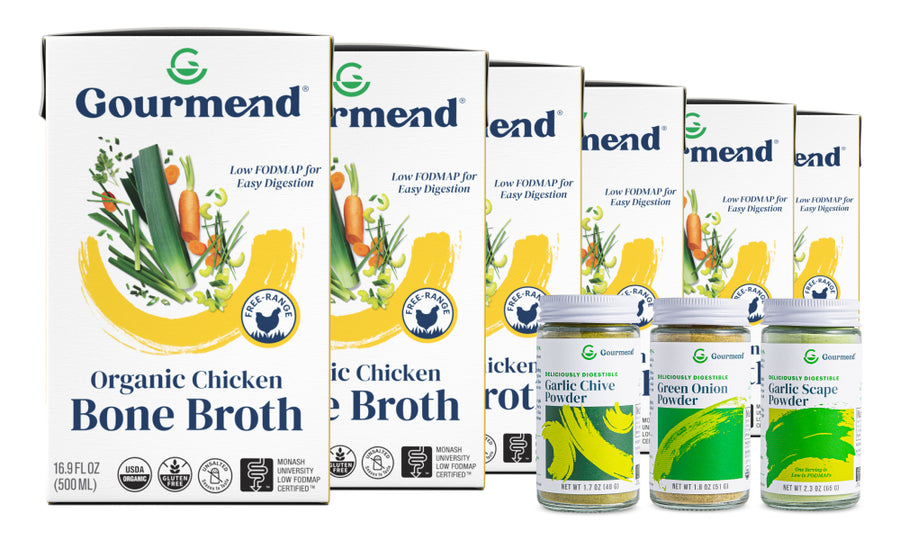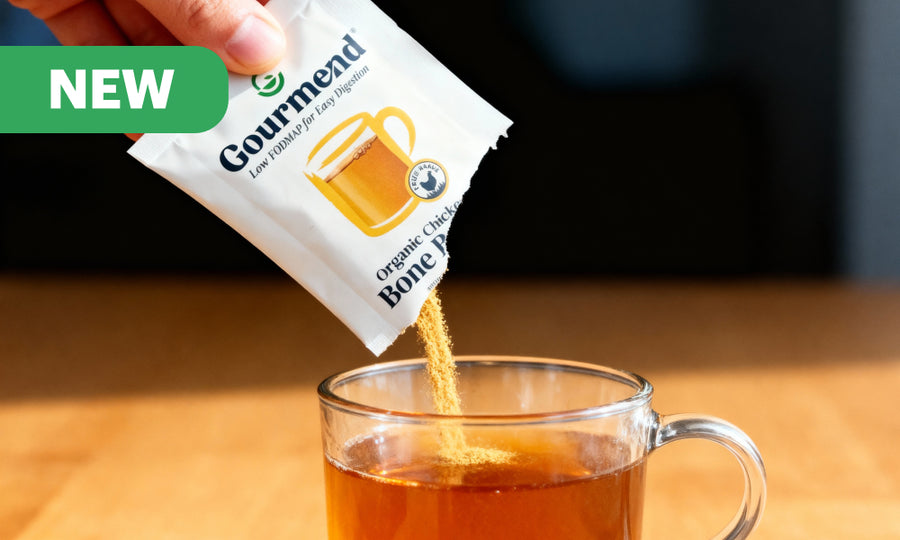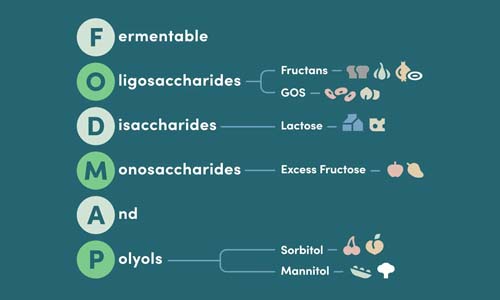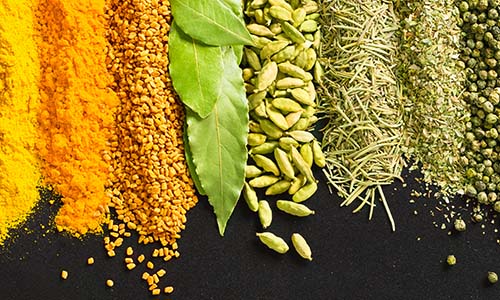Are Green Beans Low FODMAP? Your Complete Guide

Introduction to the Low FODMAP Diet and the Role of Green Beans
Green beans are low FODMAP in controlled portions, making them a valuable addition to gut-friendly meal plans. For the roughly two-thirds of Americans dealing with digestive issues—and the nearly 1 billion people worldwide managing IBS—understanding which vegetables work with your system can transform your relationship with food.
Key Takeaways
- Green beans are low FODMAP when consumed in a 75g serving, which is about 15 beans.
- Eating more than 75g of green beans can increase their FODMAP content due to sorbitol.
- Green beans can be a beneficial part of a gut-friendly diet for those managing digestive issues.
- Understanding portion sizes of vegetables like green beans is important for people with IBS.
- Approximately two-thirds of Americans and nearly 1 billion people worldwide face digestive challenges that make FODMAP knowledge valuable.
Table of Contents
- Introduction to the Low FODMAP Diet and the Role of Green Beans
- Are Green Beans Low FODMAP?
- Common Questions About Green Beans and FODMAPs
- Portion Control and Meal Planning with Green Beans
- Recipes: Low FODMAP Ways to Enjoy Green Beans
- Additional Low FODMAP Foods That Require Portion Control
- Tips for Staying Within Low FODMAP Limits
- Conclusion
What is the Low FODMAP Diet?
The low FODMAP diet targets specific carbohydrates that can trigger digestive symptoms like bloating, gas, and stomach pain. FODMAPs stands for Fermentable Oligosaccharides, Disaccharides, Monosaccharides, and Polyols—essentially, short-chain carbs that your small intestine struggles to absorb.
Key Point: FODMAPs aren't inherently "bad" foods—they just ferment in your gut, creating gas and drawing water into your intestines. For people with IBS or sensitive stomachs, this process can cause significant discomfort.
When these undigested carbs reach your large intestine, gut bacteria feast on them, producing gas and triggering symptoms. The low FODMAP approach helps you identify which specific carbs your system handles well and which ones to limit.
Why Portion Control Matters on a Low FODMAP Diet
Here's where it gets interesting: many foods aren't simply "high" or "low" FODMAP. The dose makes the difference. Even gentle, gut-friendly vegetables like green beans can trigger symptoms if you eat too much at once.
Think of it like a bucket—your digestive system can handle a certain amount of FODMAPs before it overflows into symptoms. A small serving of green beans might be perfectly fine, while a large portion pushes you over your personal threshold.
Why This Matters: Understanding portion limits means you don't have to eliminate foods entirely. Instead, you learn to enjoy them in amounts that work with your digestion, not against it.
Spotlight on Green Beans
Green beans have earned their place as a low FODMAP staple for good reason. They're versatile, nutritious, and when portioned correctly, gentle on sensitive stomachs. Whether you call them string beans, snap beans, or French beans, we're talking about the same Phaseolus vulgaris—a legume that's actually closer to a vegetable in terms of FODMAP content.
Unlike their dried bean cousins (which are high in oligosaccharides), fresh green beans contain primarily sorbitol—a polyol that becomes problematic only in larger quantities. This makes them an excellent choice for adding fiber, vitamins, and satisfying crunch to your meals without the digestive drama. For more on how legumes fit into a low FODMAP diet, see Monash University's guide to legumes and FODMAPs.
Are Green Beans Low FODMAP?
Green beans are definitively low FODMAP when you keep your serving to 75 grams or about 15 individual beans. This threshold is based on extensive testing by Monash University, the leading research institution behind FODMAP science.
Scientific Consensus and Monash University Guidelines
According to Monash University's rigorous testing protocols, green beans earn their low FODMAP status with a clear caveat: portion size matters. Their research shows that a 75-gram serving—roughly 15 medium green beans—contains low levels of FODMAPs that most people with IBS can tolerate comfortably. For a practical overview, you can also read this registered dietitian's summary of green beans and FODMAPs.
Research-Based Insight: Monash University tests foods using actual human subjects with IBS, not just laboratory analysis. This means their recommendations reflect real-world digestive responses, not theoretical FODMAP calculations.
This isn't guesswork or general dietary advice—it's data from the institution that pioneered FODMAP research. When we say green beans are low FODMAP up to 75g, we're referencing gold-standard testing that's helped millions of people manage their digestive symptoms.
FODMAP Content in Green Beans
Green beans contain sorbitol, a polyol that's one of the four main FODMAP categories. Sorbitol is a sugar alcohol that occurs naturally in many fruits and vegetables—it's the same compound that gives stone fruits like peaches and plums their potential to cause digestive upset.
The key difference with green beans is concentration. While a large peach might overwhelm your system quickly, green beans contain much lower sorbitol levels, giving you more flexibility in portion sizes before hitting your tolerance threshold.
At a Glance: Sorbitol in green beans is manageable in small amounts but can accumulate to trigger symptoms if you eat too many at once. This is why the 75g limit exists—it keeps you in the comfort zone.
FODMAP Thresholds for Green Beans
Understanding the exact thresholds helps you make informed decisions about portion sizes. Here's how green beans stack up across different serving amounts:
| FODMAP Level | Serving Size | What This Means |
|---|---|---|
| Low FODMAP | 75g (~15 beans) | Generally well-tolerated by most people with IBS |
| Moderate FODMAP | 120g (~25 beans) | May trigger mild symptoms in sensitive individuals |
| High FODMAP | 180g (~35 beans) | Likely to cause digestive discomfort for most IBS sufferers |
Visual Reference: 75 grams of green beans is roughly what fits in a cupped palm—about 15 medium-sized beans or a generous handful. This makes portion control manageable without needing a kitchen scale every time.
Why Serving Size Matters—What Happens if You Exceed It?
When you go beyond the 75-gram threshold, you're essentially loading more sorbitol into your digestive system than it can comfortably handle. The excess sorbitol draws water into your intestines and provides more fuel for gut bacteria fermentation.
Common symptoms when exceeding the green bean threshold include:
- Increased gas production and bloating
- Abdominal cramping or discomfort
- Changes in bowel movements
- That familiar "overly full" feeling even from vegetables
Individual Variation: Some people with IBS can handle slightly larger portions, while others might find even 75g challenging during flare-ups. Your personal tolerance can also vary based on stress levels, other foods eaten that day, and overall gut health.
The beauty of understanding these thresholds is that you can experiment within safe boundaries. Start with the recommended 75g serving and pay attention to how your body responds over the next few hours.
Common Questions About Green Beans and FODMAPs
The most frequent questions about green beans and FODMAPs center on preparation methods, different varieties, and whether processing affects their FODMAP content. Here's what the research tells us.
Are Canned Green Beans Low FODMAP?
Current FODMAP testing focuses primarily on fresh green beans, but the canning process likely works in your favor. When vegetables are canned, some of their water-soluble compounds—including certain FODMAPs—can leach into the liquid.
This means canned green beans, when drained, may actually contain lower FODMAP levels than their fresh counterparts. However, we still recommend sticking to similar portion sizes until more specific testing is available.
Practical Approach: Drain and rinse canned green beans thoroughly to remove any FODMAPs that may have leached into the canning liquid. This simple step can further reduce your FODMAP load.
Do Cooking Methods Affect FODMAP Content?
Cooking methods can influence FODMAP levels, though the changes are usually modest with green beans. Boiling and blanching may reduce sorbitol content slightly, as some water-soluble FODMAPs leach into the cooking water.
- Steaming
- Preserves most FODMAPs since minimal water contact occurs
- Boiling/Blanching
- May reduce FODMAP content slightly through leaching
- Sautéing/Roasting
- Concentrates flavors but doesn't significantly change FODMAP levels
The good news? All these cooking methods keep green beans within low FODMAP territory when you stick to the 75g serving size. Choose the preparation method that tastes best to you.
Are Other Green Beans (French, String) Low FODMAP?
French green beans, string beans, snap beans, and haricots verts are all varieties of the same species: Phaseolus vulgaris. The FODMAP testing and 75g threshold applies to all these varieties.
The main differences between varieties are:
- French green beans (haricots verts): Thinner, more tender, slightly sweeter
- Regular green beans: Thicker, more substantial bite, classic flavor
- String beans: Older varieties with tougher strings (most modern varieties are stringless)
Bottom Line: Whether you prefer thin French beans or thick Romano beans, the same portion guidelines apply. Choose based on taste and texture preferences, not FODMAP concerns.
Portion Control and Meal Planning with Green Beans

Practical Tips for Measuring Green Beans
Weighing every vegetable isn't realistic for daily cooking, but having reliable visual cues makes portion control effortless. Here's how to eyeball a 75g serving of green beans without obsessing over the scale:
- Count method: 15 medium green beans (about 4-5 inches long)
- Hand method: A generous cupped handful for most adults
- Plate method: About 1/3 cup when chopped
- Kitchen scale: 75g or roughly 2.6 ounces
Pro Tip: Weigh out a 75g portion once and put it on your usual plate or in your go-to bowl. Take a mental snapshot—this visual reference will serve you well for future meals.
Combining Green Beans with Other Vegetables
Green beans play beautifully with other low FODMAP vegetables, letting you create colorful, satisfying dishes without exceeding your tolerance threshold. Smart combinations help you build volume and nutrition while staying within safe limits.
Excellent low FODMAP partners for green beans include:
- Carrots: Up to 65g (about 1/2 cup chopped)
- Bell peppers: Up to 65g red or 75g yellow/orange
- Zucchini: Up to 65g (about 1/3 cup sliced)
- Bok choy: Up to 70g (about 1 cup chopped)
- Spinach: Unlimited in normal serving sizes
- Tomatoes: Up to 65g fresh (about 1/2 medium tomato)
Meal Planning Strategy: Create a "safe vegetables" rotation using these combinations. Monday might be green beans with carrots, Wednesday could feature green beans with bell peppers and zucchini. This variety keeps meals interesting while maintaining digestive comfort.
Monitoring Personal Tolerance
While research provides excellent starting points, your individual response is the ultimate guide. Some people with IBS can handle slightly larger portions of green beans, especially when their symptoms are well-managed.
Keep track of your personal patterns:
- Start Conservative
- Begin with 50-60g servings and gradually increase if well-tolerated
- Note Timing
- FODMAP symptoms typically appear 2-4 hours after eating
- Consider Context
- Stress, illness, and other high FODMAP foods can lower your threshold temporarily
- Track Combinations
- Green beans plus other moderate FODMAP foods might require smaller individual portions
Remember, the low FODMAP diet isn't meant to be restrictive forever. It's a diagnostic tool to help you understand your triggers, followed by a gradual reintroduction phase where you test your personal tolerance levels for different foods.
Recipes: Low FODMAP Ways to Enjoy Green Beans
These recipes showcase how delicious green beans can be when prepared with gut-friendly ingredients and proper portions. Each serving keeps you well within the 75g low FODMAP threshold while delivering restaurant-quality flavor.
Garlic-Infused Ghee Green Beans
This simple preparation transforms ordinary green beans into an aromatic side dish that's gentle on digestion. Using garlic-infused ghee gives you all the savory depth of garlic without the FODMAP load from garlic cloves.
Ingredients (Serves 4):
- 300g fresh green beans, trimmed (75g per serving)
- 2 tablespoons garlic-infused ghee
- 1 teaspoon Gourmend Foods Umami Seasoning
- 1/4 teaspoon sea salt
- 2 tablespoons fresh chives, chopped
- Lemon wedges for serving
Method:
- Heat garlic-infused ghee in a large skillet over medium-high heat
- Add green beans and sauté for 4-5 minutes until bright green and tender-crisp
- Sprinkle with Gourmend Umami Seasoning and salt
- Toss with fresh chives and serve with lemon wedges
Why This Works: Garlic-infused oils contain the flavor compounds but not the FODMAPs, which remain in the garlic solids. Our Umami Seasoning adds depth with organic, low FODMAP ingredients like nori and mushroom powder.
Lemon Green Beans with Pine Nuts
Bright, Mediterranean-inspired flavors make this dish feel special enough for company while remaining completely low FODMAP. The pine nuts add richness and crunch without digestive concerns.
Ingredients (Serves 4):
- 300g fresh green beans, trimmed
- 2 tablespoons extra virgin olive oil
- 1/4 cup pine nuts
- Zest and juice of 1 large lemon
- 2 tablespoons scallion greens, thinly sliced
- 1/2 teaspoon sea salt
- Fresh ground black pepper to taste
Method:
- Blanch green beans in salted boiling water for 3 minutes until tender-crisp
- Drain and immediately plunge into ice water to stop cooking
- Heat olive oil in a large skillet and toast pine nuts until golden
- Add drained green beans, lemon zest, salt, and pepper
- Toss for 2 minutes, then finish with lemon juice and scallion greens
Prep Tip: This dish can be made ahead and served at room temperature—perfect for meal prep or entertaining. The flavors actually improve after sitting for 30 minutes.
Additional Low FODMAP Foods That Require Portion Control

Green beans aren't the only nutritious vegetables that require mindful portioning on a low FODMAP diet. Understanding these thresholds helps you create varied, satisfying meals while maintaining digestive comfort.
Other Vegetables Needing Careful Servings
Many beloved vegetables follow the same pattern as green beans—they're perfectly low FODMAP in reasonable portions but can trigger symptoms when you go overboard.
- Zucchini
- Up to 65g (about 1/3 cup sliced) - contains excess fructose in larger amounts
- Red Bell Pepper
- Up to 65g (about 1/2 medium pepper) - higher in excess fructose than other colors
- Bok Choy
- Up to 70g (about 1 cup chopped) - contains sorbitol like green beans
- Canned Tomatoes
- Up to 100g (about 1/2 cup) - concentrated fructose from processing
The common thread? These vegetables contain FODMAPs in small amounts that become problematic only when portions get large. This is why the low FODMAP diet emphasizes portion awareness rather than complete elimination.
Fruits, Nuts, and Seeds with Similar Portion Limits
Beyond vegetables, several nutrient-dense foods require the same thoughtful approach to serving sizes. These foods offer excellent nutrition and flavor when portioned appropriately.
- Strawberries: Up to 140g (about 10 medium berries) - contains excess fructose
- Almonds: Up to 10 nuts - higher amounts contain excess fructose and GOS
- Chia Seeds: Up to 2 tablespoons - contains excess fructose in larger servings
- Cranberries (dried): Up to 1 tablespoon - concentrated fructose and sorbitol
Smart Strategy: Pre-portion these foods when you bring them home from the store. Having single-serving containers ready makes it easy to stay within safe limits without constant measuring.
Grains and Snacks to Measure
Even some processed low FODMAP foods have serving limits based on their ingredients or processing methods. Being aware of these thresholds prevents accidental FODMAP stacking.
- Rice Cakes
- Up to 2 plain rice cakes - larger amounts may contain excess fructans from processing
- Gluten-Free Pasta
- Up to 1 cup cooked (varies by brand) - depends on flour blend and additives
- Rice Crackers
- Check labels and stick to 1 serving - some contain high FODMAP seasonings
Tips for Staying Within Low FODMAP Limits
Strategies for Success
Managing portion sizes doesn't have to feel restrictive or complicated. With the right systems in place, staying within low FODMAP limits becomes second nature.
- Invest in a digital kitchen scale: Weigh portions a few times to calibrate your visual estimates
- Use smaller plates and bowls: Appropriate portions look more satisfying on smaller dishware
- Pre-portion snacks: Divide nuts, seeds, and dried fruits into single-serving containers
- Download the Monash University app: The gold standard for FODMAP information, updated regularly
- Keep a food and symptom diary: Track your personal tolerance patterns
Reality Check: You don't need to be perfect. If you occasionally exceed a portion limit and feel fine, that's valuable information about your personal tolerance. The goal is feeling good, not rigid adherence to every guideline.
Building Balanced, Satisfying Low FODMAP Meals
The secret to satisfying low FODMAP meals isn't just avoiding trigger foods—it's combining safe ingredients strategically to create dishes that feel abundant and flavorful.
Build your meals using this framework:
- Protein Foundation
- Chicken, fish, tofu, eggs, or tempeh - naturally low FODMAP in normal portions
- Low FODMAP Vegetables
- Mix unlimited vegetables (spinach, lettuce) with portion-controlled ones (green beans, zucchini)
- Safe Starches
- Rice, quinoa, potatoes, or gluten-free oats for satisfaction and energy
- Flavor Enhancers
- Herbs, spices, citrus zest, and Gourmend Foods seasonings for depth without FODMAPs
Conclusion
The Bottom Line: Green beans are definitively low FODMAP in 75g servings (about 15 beans), making them an excellent choice for people managing IBS and digestive sensitivities. Like many nutritious foods, they require portion awareness rather than complete avoidance.
Understanding FODMAP thresholds empowers you to enjoy a diverse, flavorful diet while maintaining digestive comfort. Green beans exemplify this principle perfectly—they're packed with nutrients, versatile in the kitchen, and completely safe when portioned thoughtfully.
The key insights to remember:
- Stick to 75g servings (about 15 medium beans) to stay within low FODMAP limits
- All green bean varieties—French, string, snap—follow the same guidelines
- Cooking methods don't significantly change FODMAP content
- Combine green beans with other low FODMAP vegetables for satisfying, varied meals
- Your personal tolerance may vary, so pay attention to your body's responses
Remember, the low FODMAP diet is a tool for understanding your digestive triggers, not a permanent restriction. Many people successfully reintroduce larger portions of foods like green beans after identifying their specific sensitivities.
Next Steps: Start incorporating green beans into your meal rotation using our portion guidelines and recipes. Track how you feel, and don't hesitate to adjust based on your individual response. Your digestive comfort and meal enjoyment can absolutely coexist.
With the right knowledge and approach, foods like green beans become allies in your journey toward better digestive health—proving that eating well and feeling good aren't mutually exclusive goals.
Check out our Low Fodmap Organic Vegetable Broth
Frequently Asked Questions
Can I eat green beans on a low FODMAP diet?
Yes, green beans can be enjoyed on a low FODMAP diet when eaten in moderate portions, typically up to about 15 beans or 75 grams. They offer a mild, fresh flavor and provide fiber without the higher FODMAP sugars that trigger symptoms in sensitive individuals.
What vegetables are not allowed on FODMAP diet?
Vegetables high in certain fermentable sugars like onion, garlic, cauliflower, asparagus, and mushrooms (like button or portobello) are generally avoided on a low FODMAP diet. These contain fructans or polyols that can cause digestive discomfort and symptoms in people with IBS or gut sensitivities.
Are cooked green beans easy to digest?
Cooked green beans are generally easier to digest than raw because cooking softens their fibers and reduces some digestive workload. This makes them a gentle choice for those managing gut symptoms while still getting the nutrition and flavor of fresh vegetables.
Do green beans make you gassy?
Green beans are less likely to cause gas compared to other beans because they contain lower amounts of fermentable carbohydrates. However, individual responses vary, so starting with small amounts and observing your body's reaction is a smart approach.
Can green beans cause IBS flare up?
For most people following a low FODMAP approach, green beans in reasonable portions do not typically trigger IBS flare-ups. The key is portion control since eating large amounts can increase fermentable fibers that might upset sensitive digestion.
What is the lowest FODMAP bean?
Green beans are among the lowest FODMAP beans you can eat, especially in moderate servings. Other low FODMAP legumes include canned lentils and chickpeas when rinsed well and consumed in small portions, but green beans remain a reliable, gut-friendly choice for bean lovers.





